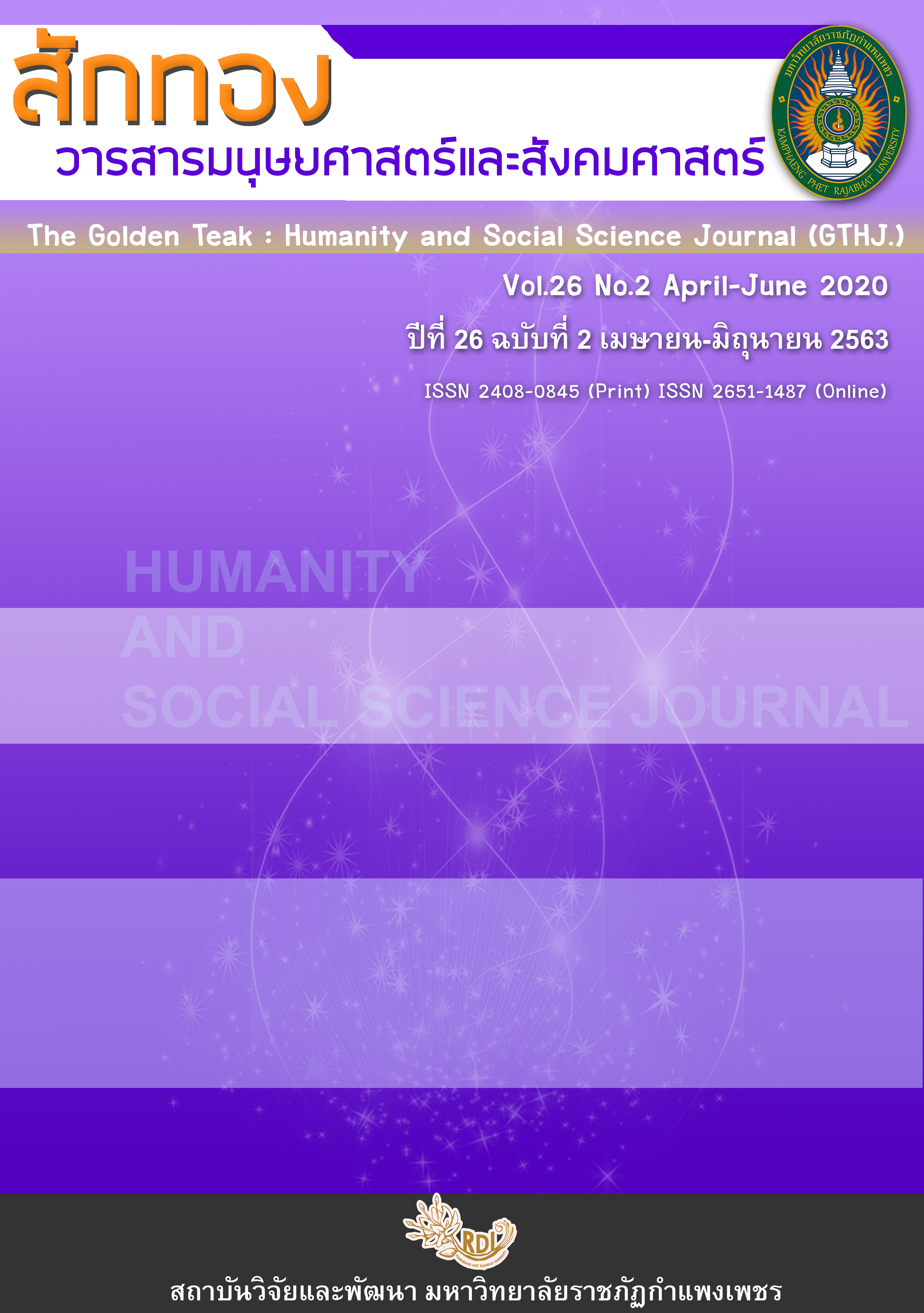Pornography Media Behaviors among Youths
Main Article Content
Abstract
This descriptive research aimed to examine the pornography media behavior among the youth in educational institutes. The sample consisted of 475 university students. Data were collected using the questionnaire developed by the researchers. Data analysis was performed using descriptive statistics, including frequency, percentage, mean, standard deviation, and Chi-square test. The results showed that mean age of 19.89 years (SD = 1.21); 68.21% of the sample were female and 58.74% of them lived in a dormitory. More than half of them had sexual experience (52.42%) and had used pornography media (59.58%). The mean age at the first pornography media use was 14.57 years (SD = 2.57). Internet was the main channel of pornography (75.77%). The largest proportion of the sample watched pornographic movies (53.36%) and used pornography media at their homes (59.72%). In addition, gender, sexual experience, and peer influence were significantly correlated with pornography media behavior.
Article Details
บทความที่ได้รับการตีพิมพ์เป็นลิขสิทธิ์ของวารสาร สักทอง : วารสารมนุษยศาสตร์และสังคมศาสตร์ สถาบันวิจัยและพัฒนา มหาวิทยาลับราชภัฏกำแพงเพชร
ข้อคิดเห็นใดๆ ที่ปรากฎในวารสารเป็นวรรณกรรมของผู้เขียนโดยเฉพาะ ซึ่งมหาวิทยาลัยราชภัฏกำแพงเพชรและบรรณาธิการไม่จำเป็นต้องเห็นด้วย
References
Aphichotikorn, P. (2008). Influence of pronography media towards sex behaviors of vocational students in Chiang Mai Province. Master of Arts in Communication. Faculty of Grauate School, Maejo University.
Bloom, BS. (1971). Handbook on formation and Summative Evaluation of Student Learning. New York : McGraw-Hill Book Company.
Digital Agency We are social. (2019). Digital around the world 2018. [Online]. Available : https://www.brandbuffet.in.th/2018/02/global-and-thailand-digital-report-2018/ [2019, January 13].
Eaton, L.A., et al. (2012). The relationship between pornography use and sexual behaviours among at-risk HIV-negative men who have sex with men. Sex Health, 9(2), 166-170.
Haggstrom-Nordin, E., et al. (2009). Experiences of and attitudes towards pornography among a group of Swedish high school students. Eur J Contracept Reprod Health Care, 14(4), 277-284.
Harkness, E.L., Mullan, B. & Blaszczynski, A. (2015). Association between pornography use and sexual risk behaviors in adult consumers: a systematic review. Cyberpsychol Behav Soc Netw, 18(2), 59-71.
Institute of Medicine and National Research Council Committee on the Science of Adolescence. (2011). The Science of Adolescents Risk-taking Workshop Report.
Washington, D.C. : The National Academic Press.
Janepanish, P., Dancy, B.L. & Park, C. (2011). Consistent condom use among Thai heterosexual adult males in Bangkok, Thailand. AIDS Care, 23(4), 460-466.
Jenkins, R.A., et al. (2002). Condom use among vocational school students in Chiang Rai, Thailand. AIDS Educ Prev, 14(3), 228-245.
National Statistical Office. (2015). Survey the use of information technology and household communications, 2015. [Online]. Available : https://www.nso.go.th/sites/2014/ Pages/%E0%B8%AA. [2019, January 13].
Owens, E.W., et al. (2012). The impact of internet pornography on adolescents: a review of the research. Sexual Addiction & Compulsivity, 19, 99-122.
Parnichshool, N. (1999). Attitudes and needs of Ramkhamhaeng demonstration teachers and students in sex education. Bangkok : Ramkhamhaeng University.
Pounglek, W. (2014, May). Factors of Bangkok adolescents' exposure to sexual content on the internet affecting their attitude toward sex. Panyapiwat Journal, 5, 105-121.
Romito, P. & Beltramini, L. (2011). Watching pornography: gender differences, violence and victimization. An exploratory study in Italy. Violence Against Women, 17(10), 1313-1326.
Rungsrisawat, S. (2010). The Exposure of Thai Teens to Pornography on the Internet and their Behaviour of Sex Relationship. Bangkok : Suan Sunandha Rajabhat University.
Sasse, C. (1994). Family today. Illinois : Glencoe/McGraw-Hill.
Stahl, C. & Fritz, N. (2002). Internet safety : adolescents' self-report. J Adolesc Health, 31(1), 7-10.
Thai Health Promotion Foundation. (2018). The survey found that Thai children are addicted to internet higher than the world average. [Online]. Available :
http://www.thaihealth.or.th/Content/41463B8%81%20.html [2019, January 13].
Wayne, W.D. (1995). Biostatistics: A Foundation of analysis in the health science. United State : John Wiley & Sons, Inc.


